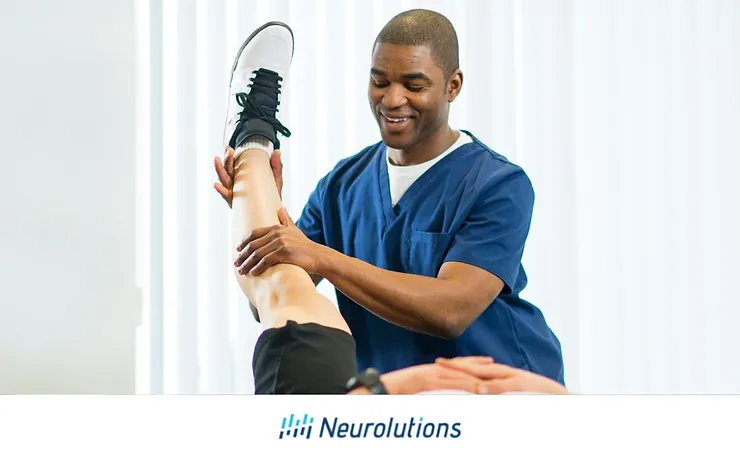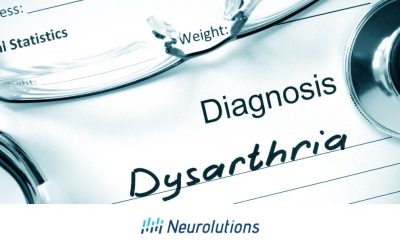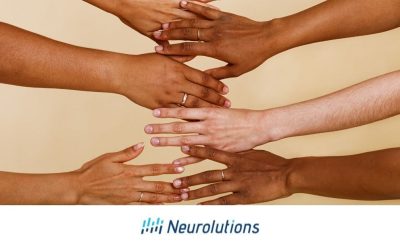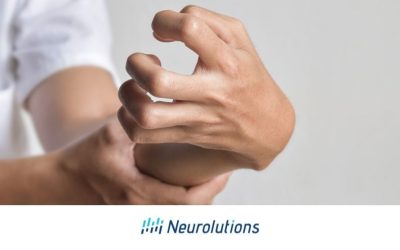Post Stroke Rehabilitation
Rehabilitation aims to help survivors reach maximum independence and attain the highest possible quality of life. Rehabilitation does not directly reverse the effects of stroke, but it can substantially aid people in achieving the best possible long-term result.
The purpose of rehabilitation is to help stroke survivors restore skills or relearn new skills after their brain has been damaged. A complex activity such as walking, for example, requires groups of coordinated leg movements and rehabilitation can help stroke survivors relearn those movements. In addition to teaching survivors new ways to perform tasks, rehabilitation strategies and techniques can also compensate for residual disabilities. Individuals may need to relearn how to use only one hand to bathe or dress, or how to communicate effectively when their ability to use language is impaired. Rehabilitation experts agree that repetition practice is the single most important part of any rehabilitation program-a skill used by everyone when they learn a new skill, whether it is playing the piano or pitching a ball.
In the acute-care hospital, rehabilitation therapy begins after the patient’s overall condition has been stabilized, usually between 24 and 48 hours after stroke. While intensive therapy is discouraged in acute care because the brain is still in a delicate state, light therapy that promotes getting the individual moving again is recommended. To strengthen their stroke-impaired limbs, patients are encouraged to change positions frequently while lying in bed and to do passive or active range of motion exercises. Suggested activities when the survivor is most alert may include following simple directions, sitting on the edge of the bed, grasping objects, and transferring to the toilet.
As a patient grows in capacity, rehabilitative nurses and therapists assist him or her with increasingly complex and demanding tasks, such as bathing, dressing, and going to the toilet. The goal is to encourage stroke patients to use their impacted limbs while engaging in these activities. Regaining the ability to do these basic daily activities is the first step toward regained independence for stroke survivors.
It may take months or years for stroke survivors to become skilled again and rehabilitation may involve working with specialists for months or years after the stroke.
Occupational Therapy After a Stroke
After a stroke, occupational therapists (OTRs) focus on achieving health, well-being, and participation through engagement in activities (i.e. occupations) . . An occupational therapist provides interventions that intend to restore motor, cognitive, and perceptual skills that have become impaired after stroke. OTRs will help survivors relearn skills needed for performing self-directed activities (also called occupations) such as personal bathing, dressing, toileting, grooming, preparing meals, house cleaning, and other common daily activities.
Survivors are also taught how to develop compensatory strategies and modify their environments to be more independent. Many clothing items can be fastened with hook and loop fasteners (such as Velcro) by people with only one hand, for example. Furthermore, occupational therapists assist clients in making changes to their homes to promote safety and accessibility by removing barriers and making physical functioning easier. For example, they can suggest the installation of grab bars in bathrooms.
Physical Therapy for Stroke Survivors
Patients with disabilities caused by motor or sensory impairment are treated by physical therapists (PTs). These professionals improve quality of life by prescribing exercises, giving hands-on care, and providing education. Their training includes an understanding of all the aspects of anatomy and physiology related to these disorders. Stroke survivors’ strength, endurance, range of motion, gait abnormalities, and sensory deficits are assessed to design personalized rehabilitation programs aimed at regaining control over movements.
Physical therapists assist stroke survivors in regaining the use of limbs impaired by stroke, teach compensatory strategies to offset remaining deficits and help maintain skills learned through exercise. It is common for survivors to avoid using impaired limbs, a behavior called learned non-use. Although repetitive use of impaired limbs may reduce disabilities, it can also increase brain plasticity.
To promote the use of impaired limbs, physical therapists use hands-on “manual” methods such as therapeutic joint and soft tissue mobilization and stretching. They also include active range-of-motion, stabilization, resistance, and endurance exercises. When possible, therapy will include tasks and situations that are relevant to the individual, such as getting up and sitting down in a familiar chair or stepping up and into their vehicle.
Exercises in physical therapy generally consist of rehearsing isolated movements, changing between different movements repeatedly, and rehearsing complex movements that require both coordination and balance, such as walking up or down a staircase. It is still possible for people who are too weak to bear their weight to practice repetitive movements during hydrotherapy (the water provides both sensory stimulation and weight support) or while wearing a harness to the extent that they are able. To promote coordination, the use of goal-directed activities, such as games, has become a recent trend in physical therapy. Physical therapists often use selective sensory stimulation to encourage survivors with impairments to use their impaired limbs and regain awareness of the neglected side of the body.
Speech-Language Pathologist Role After a Stroke
Stroke survivors may experience a wide variety of speech-related deficits ranging from mild muscle weakness affecting pronunciation and swallowing, to aphasia. Aphasia is “a loss of language, not intelligence”. For stroke survivors with aphasia, speech-language pathologists can help them relearn to use language or find other modes of communication. Survivors can also benefit from their help to improve their swallowing skills, and they are taught problem-solving and social skills that will help them cope with the aftereffects of the stroke.
Individuals with aphasia have been helped by many specialized therapeutic techniques. In some cases, short-term therapy is effective in improving comprehension very rapidly. The cornerstone of language rehabilitation is the repetition of the therapist’s words, following directions, and reading and writing exercises. Some people may benefit from coaching conversations or rehearsals, as well as developing prompts or cues to help them remember certain words.
Stroke survivors also benefit from the expertise of speech-language pathologists to overcome language disabilities. They may use written words, augmentative communication devices, or gestures, to overcome language impairments. The advancements in computer technology have resulted in the development of new types of equipment that enhance communication.
Speech-language pathologists examine stroke survivors’ swallowing patterns to determine the exact source of their impairments using special imaging techniques. Many causes of difficulties swallowing can be found, including delayed swallowing reflexes, inefficient use of the tongue, and inability to detect food lodged in the cheeks after swallowing. A speech-language pathologist can work with an individual to devise strategies to overcome or minimize the deficit once the reason has been determined. A simple change of body position during eating can make a significant difference. A food’s texture can be altered to make swallowing easier; for example, thin liquids can be thickened to prevent choking. A change in eating habits such as taking small bites and chewing slowly may also help alleviate dysphagia.
Where Can I Get Rehabilitation After a Stroke?
As soon as the stroke patient is discharged from the hospital, he or she and his family work together with hospital caseworkers and may find an appropriate place to live. Some stroke survivors move into a medical facility, while others return home.
IRF – Inpatient Rehabilitation Facilities
Free-standing inpatient facilities or those within a larger hospital complex may provide inpatient care. There is usually a 2- to 3-week stay at the facility, during which patients undergo an intensive, coordinated rehabilitation program. A typical program usually consists of 3 hours of active therapy a day for 5 or 6 days a week. Among the medical services offered in inpatient facilities is physician supervision, as well as access to a complete range of therapists specializing in post-stroke rehabilitation.
SNF – Skilled Nursing Facilities
There are fewer choices when it comes to rehab services at nursing homes than at inpatient and outpatient hospitals. Traditional nursing homes emphasize residential care, while skilled nursing facilities emphasize rehabilitation. It is not uncommon to transition to a skilled nursing facility if the individual is not yet suited for returning home with their loved ones, yet they no longer qualify for the medical care of a hospital and still would benefit from rehabilitation. Skilled nursing facilities often serve as temporary residences with around-the-clock care for those stable and tolerant of therapy. SNFs serve a very important purpose for many individuals who need to develop more activity tolerance, strength, and decision-making skills to safely manage basic needs. Therapists and staff will guide the family and residents when they are ready to progress to a living environment with reduced care and rehabilitation that can offer additional resources for growth post-stroke. There is also less therapy time available than in outpatient and inpatient rehab centers.
ORF – Outpatient Rehabilitation Facilities
Stroke rehabilitation centers are often part of larger hospital complexes and offer access to therapists as well as physicians. On average, patients spend about 3 days a week at the facility engaging in coordinated therapy sessions before returning home at night. Depending on a patient’s physical condition, extensive outpatient facilities can also offer less challenging treatment regimens similar to inpatient care.
Homecare – Rehab From Your Own Home
Patients can tailor a rehabilitation program at home and follow their schedules with home rehabilitation. It might be possible to participate in intensive therapy for a few hours per week or to follow a less demanding program. It is usually best for people who need treatment from only one type of rehabilitation therapist to go through these arrangements. Currently, Medicare-covered patients requiring such services must meet Medicare’s “homebound” requirements; lack of transportation is not considered an acceptable reason for such services. It is difficult for home-based rehabilitation programs to provide specialized equipment. In contrast, receiving treatment at home gives people the ability to practice skills and develop compensatory strategies within the context of their living environment. According to the National Institutes of Health, stroke rehabilitation trials have found that home-based balance and strength training as well as treadmill training at a rehabilitation center at improving walking as rehabilitation at a rehabilitation facility.
Improved Recovery and New Technology for Stroke Survivors
The stroke rehabilitation process can look overwhelming, but new advancements and developing technologies are helping survivors recover better than ever before. Whether it be brain-computer interface technology, like the IpsiHand, or new imaging breakthroughs, stroke recovery is being revolutionized and the possibility of reclaiming your life after a stroke is becoming more attainable each day.
Resources:




